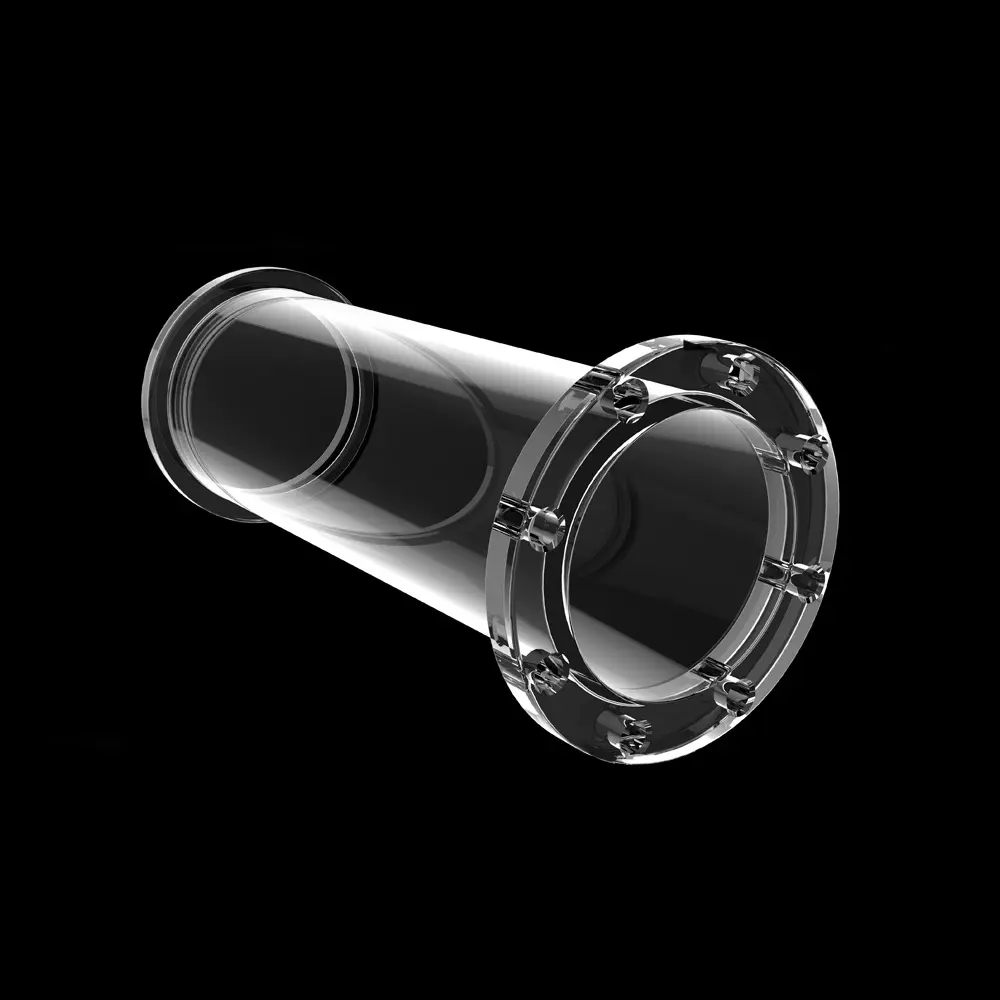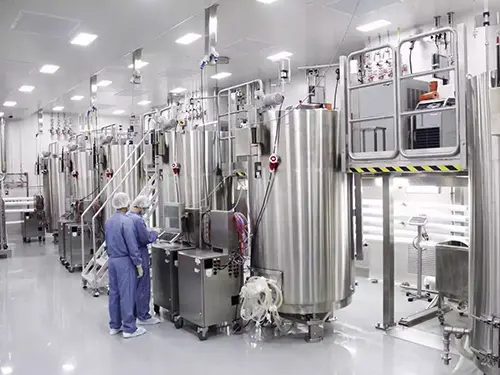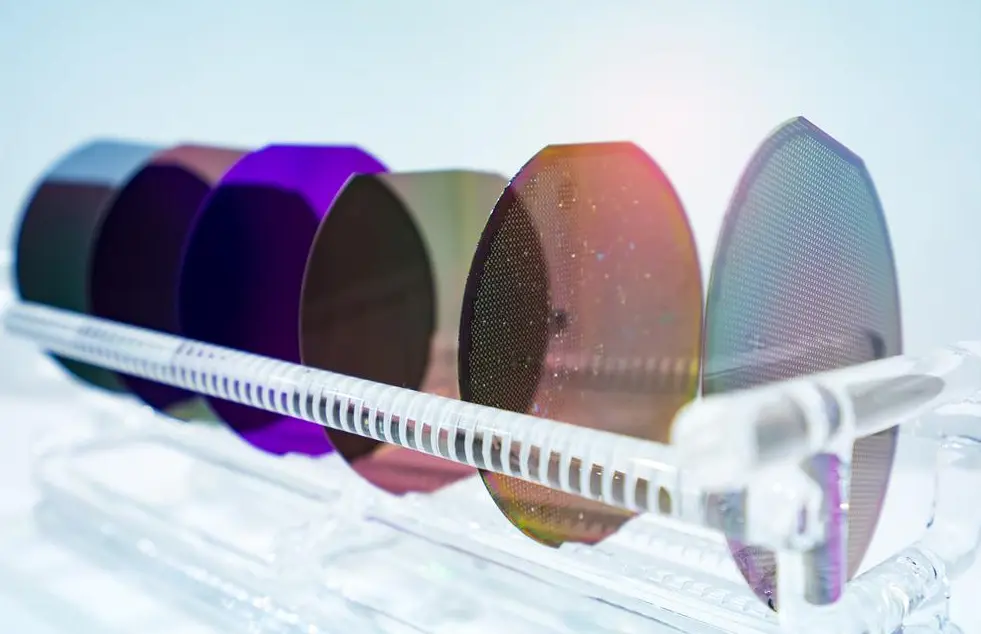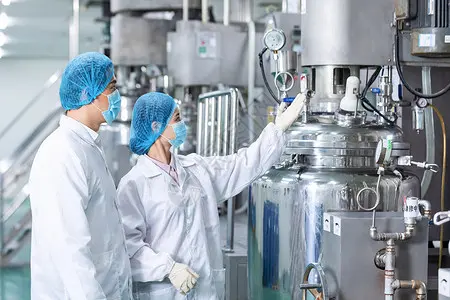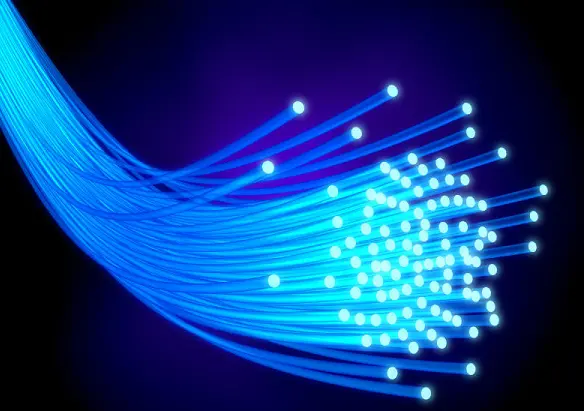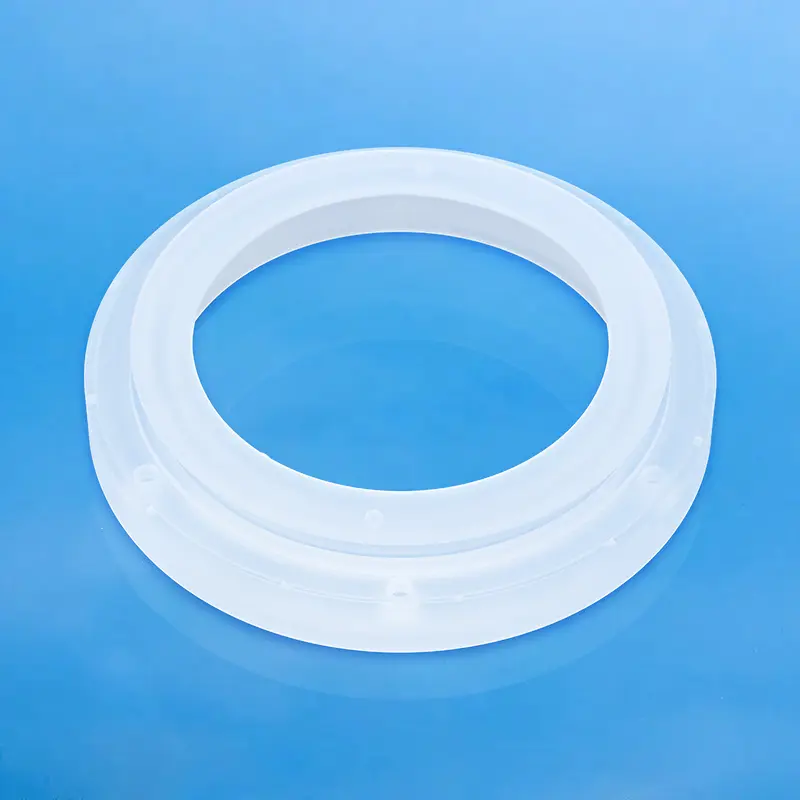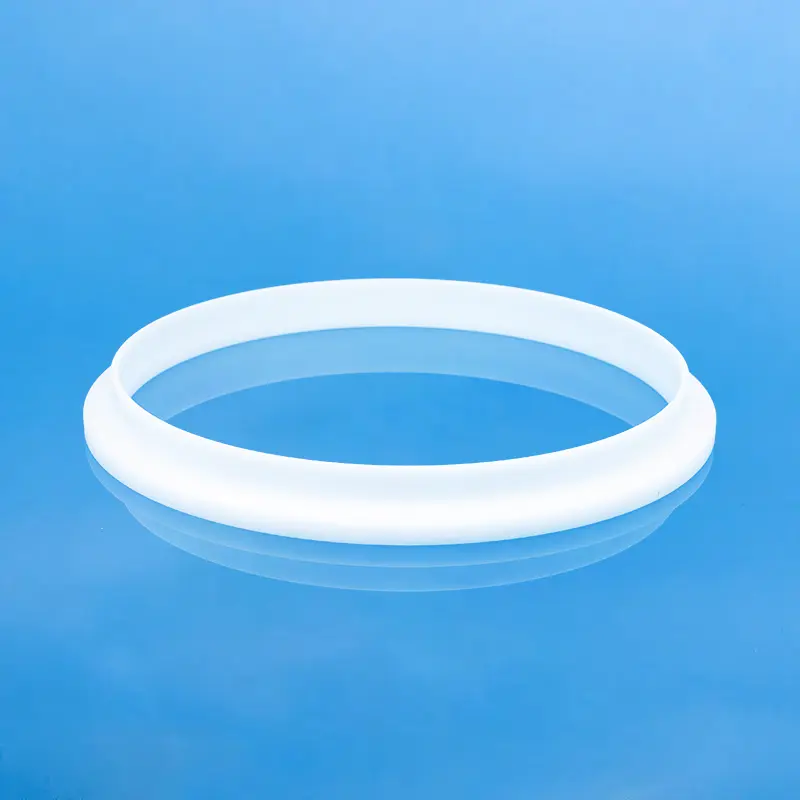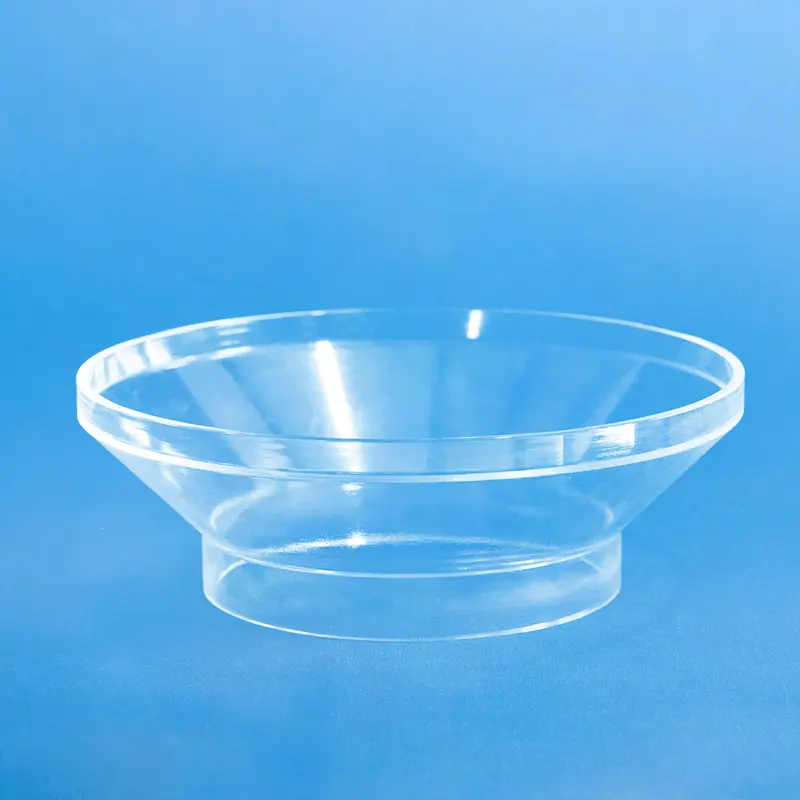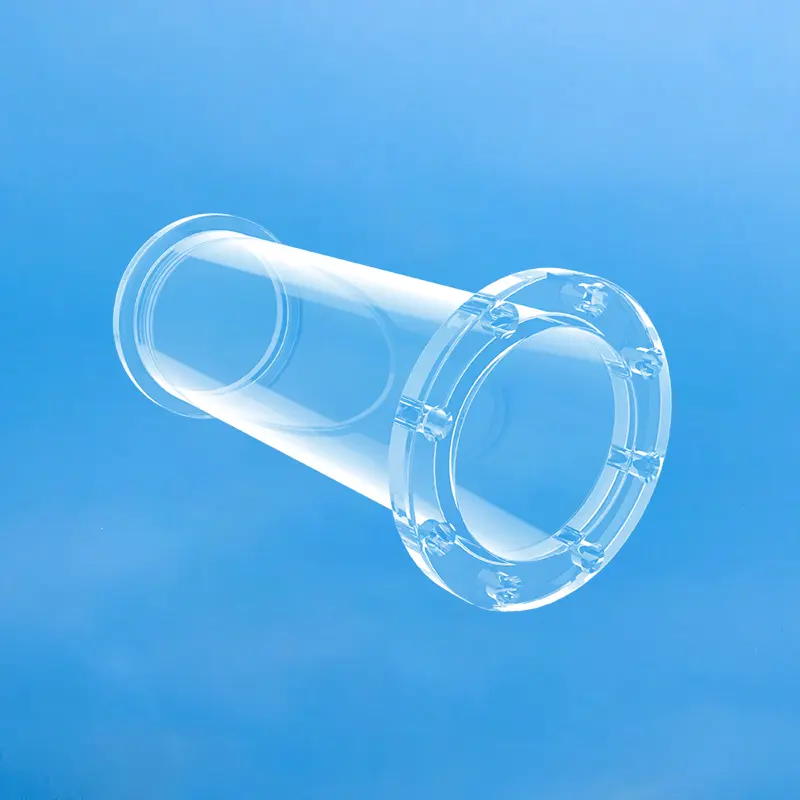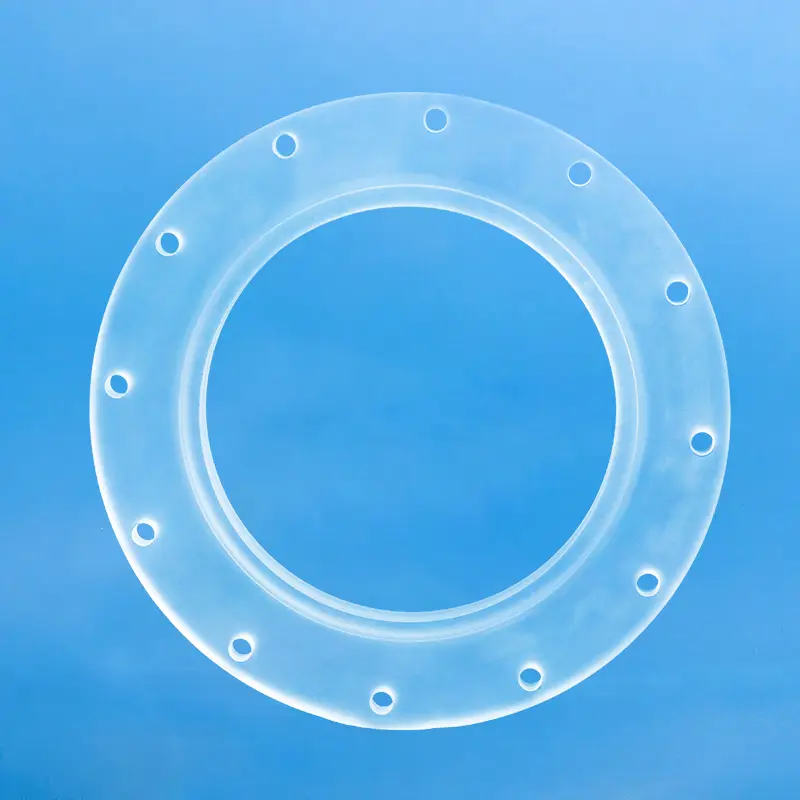Quartz flange pipes are pipe connection components made from high-purity quartz glass, featuring exceptional high-temperature resistance, corrosion resistance, and chemical stability. They are suitable for use in industries such as chemical processing, pharmaceuticals, semiconductors, and fiber optics. With their high strength and excellent sealing properties, they ensure stable operation and tight connections in high-pressure and corrosive environments.
| Eigenschaft Inhalt | Immobilienwerte |
|---|---|
| SiO2 | 99.99% |
| Dichte | 2,2×10³ kg/cm³ |
| Härte | 5,5 - 6,5 Mohs'sche Skala 570 KHN 100 |
| Zugfestigkeit | 4,8×10⁷ Pa (N/mm2) (7000 psi) |
| Druckfestigkeit | >1,1×10⁹ Pa (160.000 psi) |
| Wärmeausdehnungskoeffizient | 5,5×10-⁷ cm/cm-°C (20°C-320°C) |
| Wärmeleitfähigkeit | 1,4 W/m-°C |
| Spezifische Wärme | 670 J/kg-°C |
| Erweichungspunkt | 1730°C (3146°F) |
| Glühpunkt | 1210°C (2210°F) |
| Dehnungspunkt | 1120°C (2048°F) |
| Arbeitstemperatur | 1200°C (2192°F) |
| Elektrischer spezifischer Widerstand | 7×10⁷ Ohm cm (350°C) |
| Größe | Kundenspezifisch |
| Logo | Kundenspezifisches Logo akzeptieren |
High-Temperature Performance
Quartz flange pipes can withstand extremely high-temperature environments, typically suitable for applications exceeding 1000°C, making them an ideal choice for high-temperature process flows.
Chemical Stability
The quartz material exhibits excellent resistance to various chemical substances, including strong acids, strong bases, and organic solvents. This characteristic makes quartz flange pipes particularly useful in the chemical and pharmaceutical industries.
High Purity and Low Impurities
Quartz flange pipes are made from high-purity quartz glass, which means they contain very low levels of impurities. This is crucial for applications requiring high-purity environments, such as semiconductor manufacturing.
Excellent Sealing and Mechanical Strength
Quartz flange pipes are precision-engineered to provide excellent sealing performance while maintaining high mechanical strength, allowing them to operate stably in high-pressure environments and reduce the risk of leaks.
Anwendungsszenario
High-Temperature Chemical Processing
Quartz flange pipes are essential in chemical processing plants where high-temperature, corrosive substances are common. They are used in reactors, distillation columns, and piping systems where they ensure reliable transfer and containment of aggressive chemicals at elevated temperatures, such as in the production of specialty chemicals or pharmaceuticals.
Semiconductor Manufacturing Clean Rooms
Due to their high purity and low impurity levels, quartz flange pipes are utilized in clean rooms in semiconductor manufacturing. They are ideal for piping gases and liquids during critical fabrication steps where any contamination can significantly affect the final product. Examples include processes like chemical vapor deposition (CVD) and etching where the purity of the delivery system is crucial.
High-Purity Pharmaceutical Production
In the pharmaceutical industry, quartz flange pipes are crucial for transferring highly sensitive and corrosive pharmaceutical ingredients. Their chemical inertness ensures that the materials do not react with or contaminate the drugs, while their high-temperature stability enables sterilization processes, ensuring the highest purity and safety standards in drug production.
Fiber Optic Production
In the production of fiber optic cables, quartz flange pipes are used to transfer high-purity gases and materials at high temperatures. The controlled environment needed for fiber optic production benefits from the high-temperature and chemical resistance of quartz, as well as its purity, ensuring that the resulting fibers meet demanding standards for signal transmission.
Quartz flange pipes offer several key advantages, including exceptional high-temperature resistance (typically exceeding 1000°C), excellent chemical stability against a wide range of corrosive substances, high purity and low impurity levels ideal for sensitive applications, and superior sealing and mechanical strength for reliable performance under pressure. These properties make them ideal for demanding environments where traditional materials may fail.
Quartz flange pipes are commonly utilized in industries such as chemical processing, pharmaceutical manufacturing, semiconductor fabrication, and fiber optic production. In chemical processing plants, they handle corrosive chemicals and high-temperature environments. In semiconductor manufacturing, their high purity prevents contamination of sensitive electronic components. In pharmaceutical and fiber optic production, their chemical inertness and temperature resistance are crucial for maintaining quality and process integrity.
The expected lifespan of quartz flange pipes depends on various factors such as operating temperature, pressure, chemical exposure, and handling procedures. With proper usage and regular inspection, quartz flange pipes can have a long service life. Routine maintenance should include checking for cracks, wear, or contamination, and cleaning the pipes as needed. Depending on the specific environment and usage, a replacement schedule should be established to ensure ongoing reliable performance.
Häufig gestellte Fragen
Quarzglas ist ein hartes und sprödes Material mit ausgezeichneten physikalischen und chemischen Eigenschaften, extrem hoher mechanischer Härte, guter elektrischer Isolierung, hoher Temperatur- und Korrosionsbeständigkeit, geringer und stabiler Verzögerungsleistung, guter Lichtdurchlässigkeit usw. Es findet breite Anwendung in der Halbleiterindustrie, Optik, Elektrizität, Chemie, Luft- und Raumfahrt, Automobilindustrie und anderen Bereichen. Harte und spröde Werkstoffe sind schwer zu bearbeiten, und in vielen Bereichen werden dringend Schneidverfahren mit geringem Kanteneinbruch, geringem Materialverlust, geringer Querschnittsrauheit und einem großen Schnittdickenbereich benötigt. Das traditionelle Schneidverfahren für Quarzglas ist das mechanische Schneiden, d. h. das Scheibenschneiden. Zu den nicht-traditionellen Schneidverfahren gehören Wasserstrahlschneiden, elektrochemisches Drahterodieren, kontinuierliches Laserschneiden usw. Das mechanische Schneiden ist kostengünstig, aber der Kontakt zwischen der Scheibe und dem Material verursacht einen hohen Werkzeugverschleiß, und das Material wird leicht durch das Werkzeug verschmutzt. Quarzglas neigt zu Kanteneinbrüchen, Mikrorissen und Eigenspannungen, was die Festigkeit und Leistung des Materials beeinträchtigt! Das Schneiden von Kurven ist schwierig und erfordert Nachbearbeitungen wie Schleifen und Polieren. Das Laserschneiden kommt nicht direkt mit dem Material in Berührung, hat keine Kontaktspannungen und kann komplexe Kurvenschnitte durchführen. Der Pikosekundenlaser hat die Vorteile eines kleinen Punktdurchmessers, einer hohen Präzision, einer kurzen Einwirkungszeit auf das Material und eines kleinen Einwirkungsbereichs und eignet sich für die Bearbeitung von harten und spröden Materialien.
。

